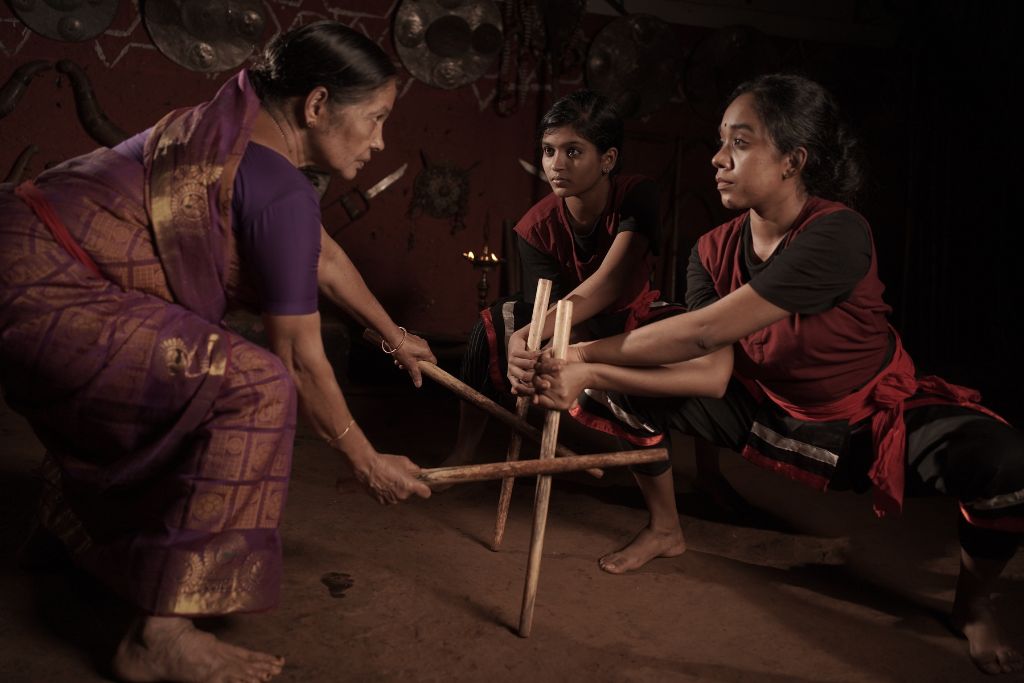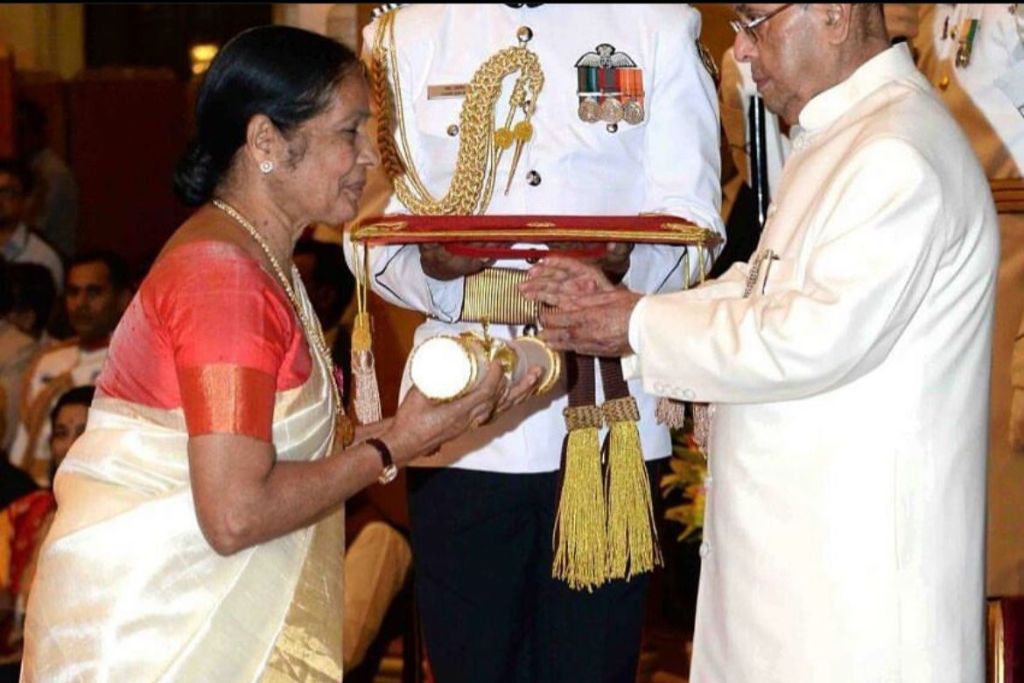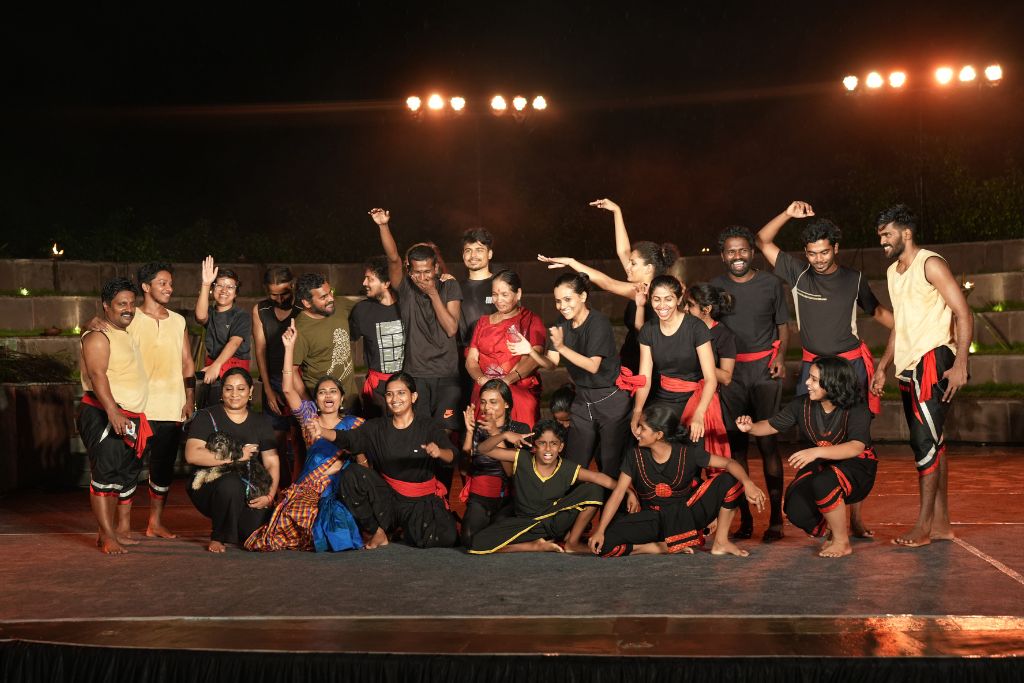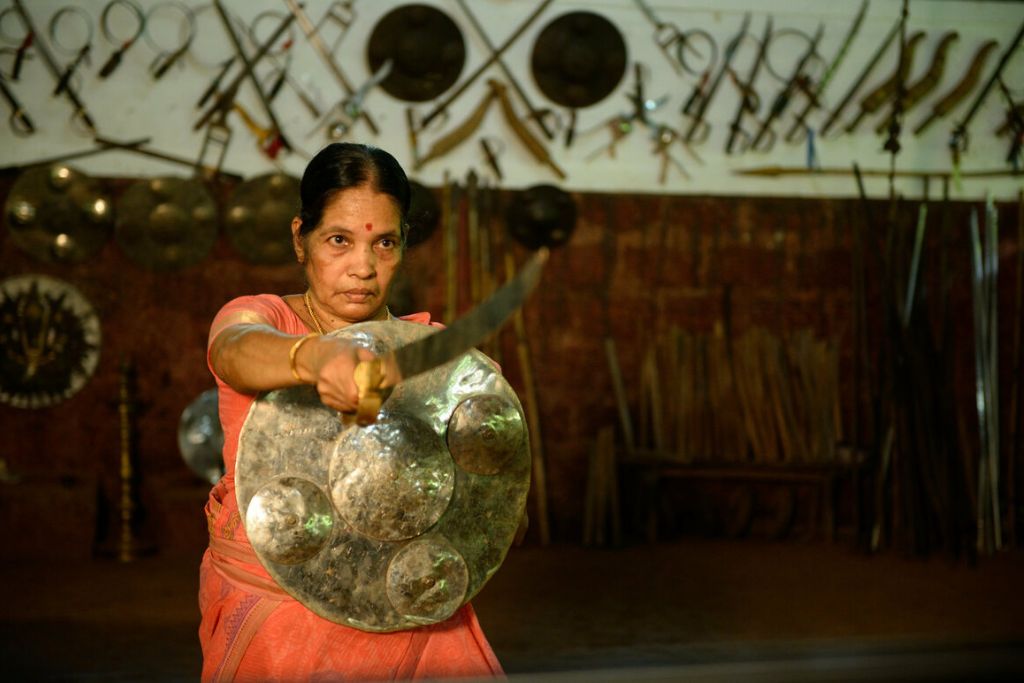My kalaripayattu journey began at the tender age of five, at Kadathanadan Kalari Sangham, guided by VV Raghavan, my mentor and the founder of the school.
It was a surprise to many that Raghavan, ever the tough taskmaster, was impressed by my nimble footwork and dedication.
When I was 17, Raghavan proposed to me, marking the beginning of a lifelong partnership. We went on to have two sons and two daughters, all of whom started practising kalaripayattu from the age of six.
Alongside my husband, I started teaching kalaripayattu. I became the lead trainer after Raghavan’s passing in 2009.
Today, at 81, I am a practitioner and teacher, running classes for enthusiastic disciples.
Also Read: Odisha’s tribal youth excel in Pencak Silat martial art




